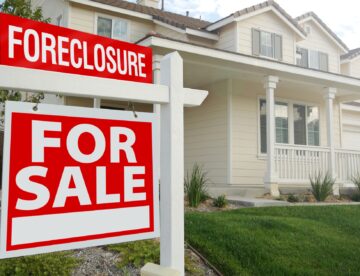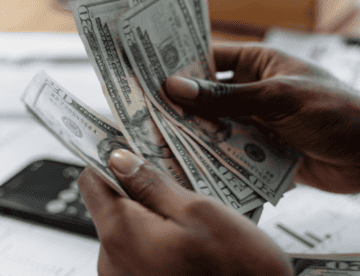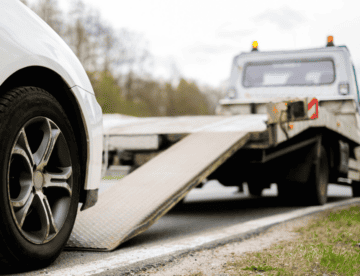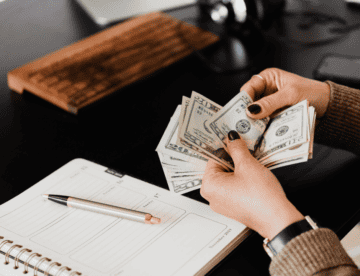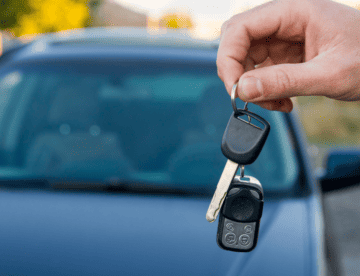
Our modern bankruptcy law has a long history dating back to the Mosaic Law under which debts owed by members of the Jewish community were forgiven every seven years, a year known as the Sabbatical Year. The seventh Sabbatical Year was followed by the Year of Jubilee, whereby all debts were mandated to be forgiven and all debtor-slaves were released. The ancient practice of debtor-slavery has long been replaced with our modern bankruptcy code which allows individuals and corporations that are struggling financially to get back on their feet. Title 11 of the United States Code governs the practice of bankruptcy and is very complex; therefore, it is advisable to consult with an experienced bankruptcy attorney before filing for bankruptcy protection.
Forms of Bankruptcy Protection
Chapter 7 and Chapter 13 are the most common forms of bankruptcy protection for individuals. Your financial situation will determine which chapter is best for you. Other chapters of bankruptcy are reserved for businesses, family farmers, and fishermen and are beyond the scope of this article. In a nutshell, Chapter 7 bankruptcy is intended to give you a fresh start by discharging, or eliminating, your unsecured debts, such as credit cards, medical bills, and unsecured loans. Chapter 7 is often referred to as a total bankruptcy. Debts that cannot be discharged include student loans, taxes, and domestic support obligations. Chapter 13 is a plan of repayment of your debts over a three to five-year period. Most people that file a Chapter 13 case are those that are behind on mortgage or car payments and they want to keep those assets. Although Chapter 13 is a plan of repayment, the amount that you will have to pay to your unsecured creditor will depend on your financial situation.
Qualifying for a Chapter 7
If you have significant debt consisting of credit cards, medical bills, deficiencies on repossessed vehicles, unpaid rent for a prior residence, and/or unsecured loans, then obtaining a fresh start under Chapter 7 may be the best option for you. To file for Chapter 7 protection, you must first determine whether you qualify for a Chapter 7 by considering your total household income and the number of people in your household for which you are responsible (your “household size”). You must include your spouse’s income, and the income of anyone else living in the household for which you are responsible when determining whether you qualify for a Chapter 7, even if you are filing as an individual. You will need to complete a means test which calculates your monthly disposable income by considering your average gross household income for the past six months and applying allowable deductions determined by the Internal Revenue Service and the bankruptcy code. If you have little or no monthly disposable income according to the means test, you will qualify for a Chapter 7 case.
How To Protect Your Equity
Technically, a Chapter 7 bankruptcy case is a liquidation of your assets and a discharge of your unsecured debts. After you have determined that you qualify for a Chapter 7 case from an income standpoint, you need to determine whether you have equity in assets that exceeds what can be protected using bankruptcy exemptions. Bankruptcy exemptions are used to protect a certain amount of equity you have in your assets. These exemptions can be complicated so make sure you understand which exemptions apply to you and the dollar amount that you can use to protect assets such as a home, car, household goods, electronics, jewelry, etc. If you find that you have assets with equity that exceeds what can be exempted (“unexempt equity”), you will either have to pay the unexempt equity to the Chapter 7 Trustee or the Trustee may liquidate the asset, pay you your exemption amount, and distribute the balance to your unsecured creditors. Equity in property that exceeds the exemptions available to you may be one reason to consider filing a Chapter 13 rather than a Chapter 7.
Will I Lose My Property?
When filing a Chapter 7 case, you must decide whether you will surrender property on which you are making payments and no longer be responsible for the debt or keep the property and continue to make payments. A common misconception of Chapter 7 bankruptcy is that you will lose your property when you file a case. If you are current on your mortgage or car payments when you file for Chapter 7, and you don’t have unexempt equity in the property, you can continue to make the payments and keep the property. The creditor will likely want you to execute a reaffirmation agreement by which you agree to keep making payments because you want to keep the property. This document makes you legally responsible for making the ongoing payments even after you receive a discharge in your case. Make sure you understand the pros and cons of signing a reaffirmation agreement before executing one with the creditor. If you are not current on the payments when you file for Chapter 7, you can try to work out a payment arrangement with the creditor, but the creditor does not have to work with you if they want the property. The creditor cannot take the property while you are in bankruptcy without getting permission from the court, but they can take the property once you receive your discharge and your case is closed if you cannot work out a payment arrangement with them.
Considering A Chapter 13 Case
If you are behind on car or mortgage payments, have equity in property that exceeds what can be exempted, or do not qualify for a Chapter 7 bankruptcy case, you might want to consider filing a Chapter 13 case. You can protect your home from foreclosure or protect your car from repossession by paying your creditors through a Chapter 13 plan. If you are behind on your mortgage payments and file a Chapter 13 case, the arrears will be put into a Chapter 13 plan to be paid back over a three to five-year period. You must continue to make your regular mortgage payments on a going forward basis and make a monthly payment to a Chapter 13 Trustee to take care of the arrears. If you are behind on car payments, you can restructure that debt through a Chapter 13 plan. One advantage of paying your vehicle through a Chapter 13 plan is that in most cases you can reduce your interest rate. Also, if you purchased the vehicle more than 720 days before filing your case (approximately 2-1/2 years) and you owe more than the vehicle is worth, you can “cram down” the amount you owe on the vehicle to the value of the vehicle. This, combined with spreading the payments over a five-year period, may reduce your monthly payments on the vehicle.
How To Qualify For A Chapter 13
The means test discussed above does not determine if you qualify for filing a Chapter 13 case but will determine if you are required to pay anything to your unsecured creditors. If you are below the median income for a household of your size or if the means test shows you have no monthly disposable income, you will qualify for a zero percent plan – a Chapter 13 plan that proposes to pay nothing to your unsecured creditors. If the means test shows you have monthly disposable income, you will be required to pay a percentage to your unsecured creditors, up to 100%. In addition, if you have equity in property that exceeds the exemptions available to you, then you will be required to pay a “pool” to your unsecured creditors equal to the amount of the unexempt equity.
Eliminating Second Mortgage
Another advantage of a Chapter 13 case is that you may be able to eliminate a second mortgage on your primary residence if you owe more than your home is worth, often referred to as being upside down. Stripping the second mortgage converts the debt from a secured debt to an unsecured debt. The ability to strip liens on property does not apply to rental properties but you may be able to reduce the amount you owe on rental properties by cramming them down to the value, similar to what you can do with a vehicle. Judgment liens can also be removed from property in which there is no unexempt equity, converting the debt from secured to unsecured. If you qualify for a 0% plan, the effect is that the debt is eliminated; however, if your Chapter 13 plan requires you to pay a pool to your unsecured creditors, then you will have to pay back a portion, or all, of the second mortgage or judgment lien debt.
When Will The Creditors Stop Calling?
Upon filing a bankruptcy case, an automatic stay goes into place which prevents creditors from initiating or continuing collection activities against you. There are some exceptions to this rule but when you file for a bankruptcy case, creditors are prevented from foreclosing on your property, repossessing your vehicle, garnishing your wages or bank accounts, filing a lawsuit against you, or otherwise harassing you. Bankruptcy is a powerful tool to help individuals who are struggling financially. If you are being harassed by creditors, have so much debt that you don’t know what to do, are facing a foreclosure on your home, or are facing repossession of your vehicle, contact a bankruptcy attorney to find out what options are available to you. Most bankruptcy attorneys offer a free consultation so it will cost you nothing to see if bankruptcy can give you the financial help that you need. We offer Bankruptcy services in the following locations:
- Bankruptcy Lawyers in Athens
- Bankruptcy Lawyers in Duluth
- Bankruptcy Lawyers in Conyers
- Bankruptcy Lawyers in Morrow
- Bankruptcy Lawyers in Kennesaw
